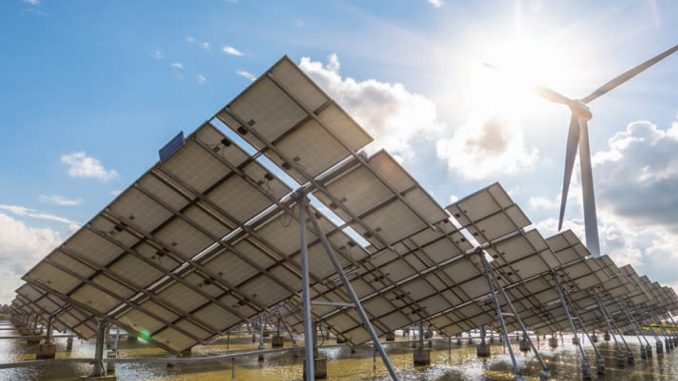
Off-grid renewable energy systems are increasingly being viewed as a means to provide sustainable and cheap electricity to the vast sections of the country that are yet to be connected to the main grid, especially villages spread over difficult terrain. On the policy front, a number of rural support schemes and programmes have been launched in the past with the aim of providing basic energy access through off-grid solutions to remote regions. However, their progress has been hampered by delayed procurements and erratic implementation on the ground.
Meanwhile, entrepreneurial activity and private sector investment in the renewable off-grid energy segment have made significant headway, but their on-the-ground success has been limited due to factors pertaining to an ambiguous future policy landscape and limited financing. A number of barriers, of which many are market specific, make it difficult for companies to expand. These barriers need to be overcome through focused and specialised solutions.
Current industry structure
According to a Climate Policy Group report, there are over 40 players in the decentralised renewable energy segment (with more than 100 kW of mini- and microgrid installations). They have adopted a wide range of technologies and business models. Some of these players are Azure Power, Gram Power, OMC Power, Husk Power, Saran Renewable Energy, Gram Oorja, Solkar, Desi Power, Biotech India, Mera Gao Power and Naturetech Infra.
While a few enterprises such as Azure Power, OMC Power and Husk Power have shown signs of growth, most of them are struggling to achieve commercial viability. The majority of these players rely on subsidies and grants, and only three have total installed minigrid capacities (capacity of all utilities put together) greater than 300 kW.
Being capital intensive, these enterprises face a number of challenges. First, they need significantly high levels of upfront capital for plant installation. Second, debt is their primary need, which is unmet as the cost of standard domestic financing is high. Further, the existing regulations make it difficult for these companies to get foreign financing or leverage equipment and inventory as collateral for lease financing (Azure Power is an exception due to its credentials in the grid-connected space). Third, these players face challenges surrounding affordability and collection of regular payments from consumers. Lastly, the lack of clarity in the government’s plans for grid extension and interactivity has led to concerns about the long-term viability of the microgrid-based business model.
A similar trend can be observed in the solar home systems market, which comprises over 40 established players and new entrants who are trying to capitalise on the growth opportunity. While no single player has achieved meaningful scale to date, there are a few large conglomerates that have won government tenders. However, they have been struggling to claim a sustained pipeline of direct customer sales.
The majority of the remaining players are small, selling less than 5,000 units a year, mostly through third-party distributors and dealers. Some of these players have been successful in reaching rural households by building their own rural distribution networks.
Policy push and progress report
The Ministry of New and Renewable Energy (MNRE) is providing budgetary as well as technical support to this segment, through various central and state-level programmes.
One such initiative is the Off-grid and Decentralised Applications Programme being implemented under the National Solar Mission. Mini/Microgrids are a key element of this programme. The development of this segment is lagging behind due to the risk associated with mini/microgrid projects. To overcome these challenges and provide a greater thrust to the segment, the ministry has started empanelling energy service companies as rural energy service providers, based on specific eligibility criteria. The MNRE has also specified the benchmark cost for minigrid systems (10-250 kWp) as Rs 300 per Wp, which mainly consists of solar power generation costs and associated public distribution network costs. In order to support the segment, the ministry is providing central financial assistance to solar photovoltaic micro/ minigrid systems ranging from Rs 85 per Wp to Rs 115 per Wp, depending on the category of the state, and the size and mode of the project.
Another major initiative is the National Biogas and Manure Management Programme, which was launched in 2002-03 with the aim of setting up family-type biogas plants that produce at least 25 kg of organic biodegradable waste, particularly in the rural and semi-urban areas of the country. So far, progress under this programme has been slow. Against the target of setting up 100,000 plants for 2016-17, about 35,557 family-type biogas plants are reported to have been set up as of December 2016. Meanwhile, the cumulative installation of about 4,940,000 family-type biogas plants as of December 2016 accounts for 41.1 per cent of the total estimated potential of cattle dung waste.
The Solar Energy Corporation of India is also focusing on solar off-grid generating systems, solar home lighting systems and various other forms of solar-based heating/cooling/thermal applications in the domestic, commercial and industrial segments. So far, there has been limited progress on this front.
To give a push to the segment, the government is now streamlining the policy and regulatory processes. Some of its recent initiatives are as follows.
Policy roadmap for microgrids
In June 2016, the MNRE released a draft national policy for mini- and microgrids. The policy aims to deploy at least 10,000 renewable energy projects in the next five years in the unserved and underserved parts of the country, with an average capacity of 50 kW per project. The draft policy provides the much-needed certainty to the segment and includes measures such as introducing single-window clearances, grid connectivity and pricing visibility for the evolution of bankable business models.
Surprisingly, it does not offer any direct financial incentives or subsidies. Grid power is heavily subsidised for residential and agricultural consumers, and the ability of these consumers to pay for more expensive mini/microgrid power continues to be a concern. Nonetheless, the policy is intended as a guideline for the states, which can adapt or modify it based on their needs.
At present, Uttar Pradesh is the only state with a policy for minigrids. Under this policy, it aims to cover nearly 20 million households, which account for a tenth of its population, through minigrids. The state offers a 30 per cent subsidy for these grids, which can also be powered by wind, biomass or water. The grids must guarantee at least eight hours of electricity supply to homes and six hours for commercial set-ups. Notably, the policy offers exit options in areas with adequate grid supply. To this end, either the discom can receive power from the minigrid at an agreed tariff or the project can be transferred to the discom. Policy clarity is one of the key reasons that Uttar Pradesh is home to the largest number of microgrid operators. Other states are yet to come up with microgrid policies.
Towards a kerosene-free India
Kerosene is predominantly used as a lighting fuel in rural India, with less than 1 per cent of households using it as a primary cooking fuel. In urban-poor households, it is used for both lighting and cooking.
A recent report by the Council on Energy, Environment and Water (CEEW) shows how shifting from kerosene to alternative power sources such as solar-assisted solutions for lighting and fuels like liquefied petroleum gas for cooking could be economically beneficial for both the government and households. The shift would provide households with much better end services and mitigate the adverse health impact associated with kerosene use.
The largest energy access survey in India, conducted by the CEEW and Columbia University, shows that 78 per cent of the rural households across six major states are willing to adopt solar-based lighting solutions in lieu of a reduction in their kerosene subsidy.
Against this backdrop, in 2016, the government launched the Ujjwala scheme to reduce kerosene consumption by shifting from the subsidy on kerosene model to a direct transfer of funds model to bank accounts of people below the poverty line. The scheme has led to a decline in kerosene supply, from 6.3 million tonnes (mt) in the first 11 months of 2015-16 to 5 mt during the same period in 2016-17. This is a big positive for the solar off-grid lighting industry. Besides, the government has been running massive awareness programmes to educate people about the commercial benefits of shifting to renewable solutions.
Conclusion
Despite growing awareness, falling technology prices, proactive policymaking and improved financing, the segment has not been able to witness a change at the desired scale. The impetus for more rapid and large-scale growth of off-grid renewable energy projects requires better technology and effective policies, and can be sustained through functional business models and specialised financial solutions.



